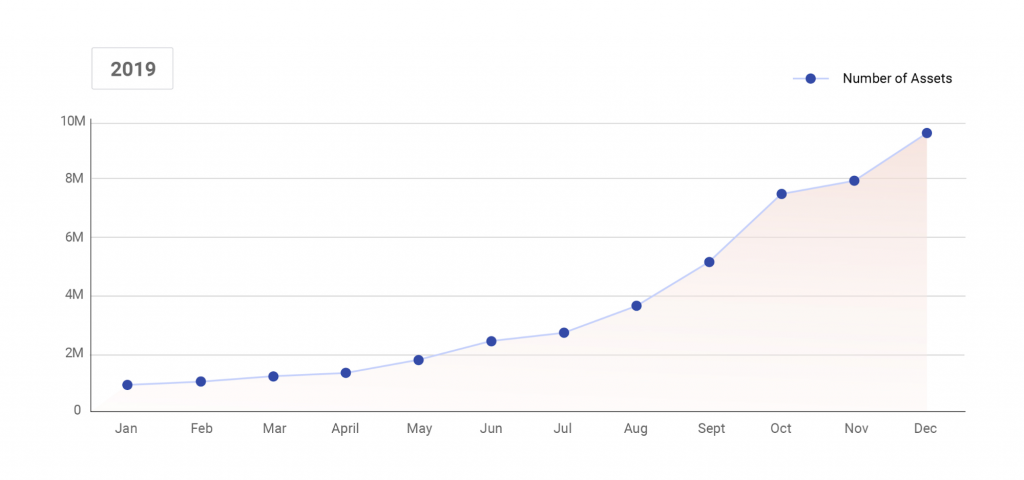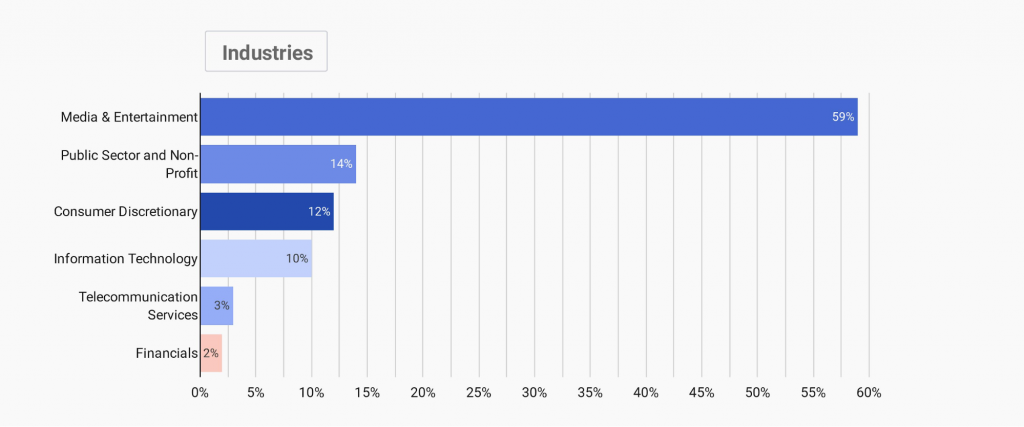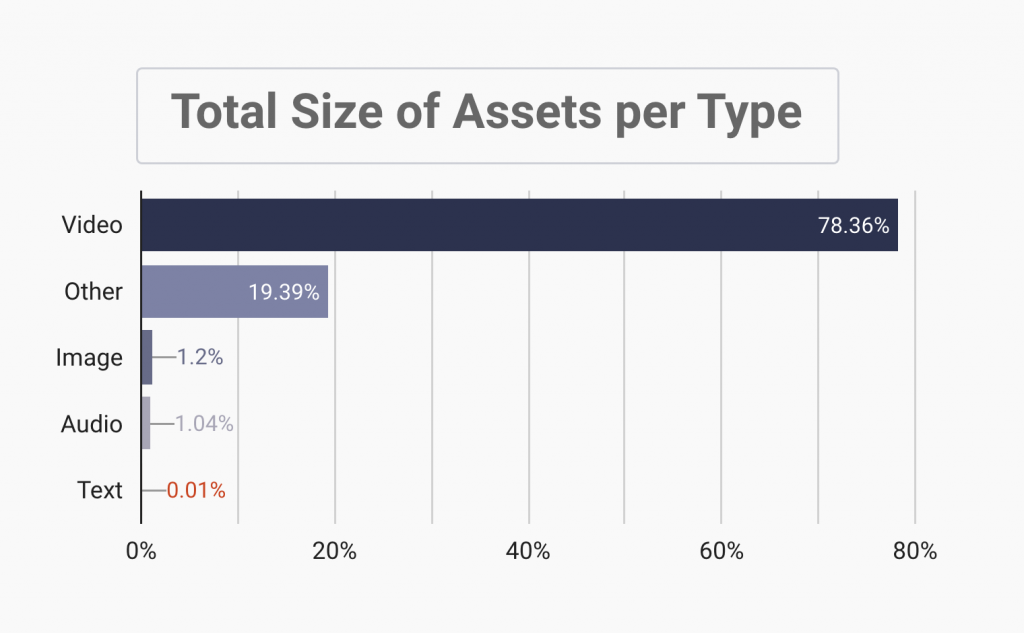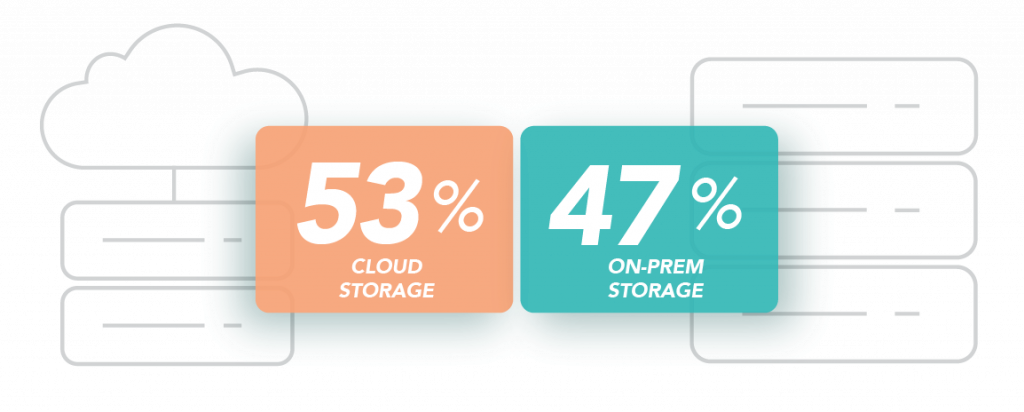![]()
Recently, the team at iconik, a popular cloud-based content management and collaboration app, released a stats-driven look at how their business has grown over the past year. Given that we just released our Q1 Hard Drive Stats, we thought now was a good time to salute our partners at iconik for joining us in sharing business intelligence to help our industries grow and progress.
Their report is a fascinating look inside a disruptive business that is a major driver of growth for Backblaze B2 Cloud Storage. With that in mind, we wanted to share our top takeaways from their report and highlight key trends that will dramatically impact businesses soon—if they haven’t already.
Takeaway 1: Workflow Applications in the Cloud Unlock Accelerated Growth

Traditional workflow apps thrive in the cloud when paired with active, object storage.
We’ve had many customers adopt iconik with Backblaze B2, including Everwell, Fin Films, and Complex Networks, among several others. Each of these customers not only quickly converted to an agile, cloud-enabled workflow, they also immediately grew their use of cloud storage as the capacities it unlocked fueled new business. As such, it’s no surprise that iconik is growing fast, doubling all assets in Q4 2019 alone.
iconik is a prime example of an application that was traditionally installed on physical servers and storage in a facility. A longtime frustration with such systems is trying to ‘right-size’ the amount of server horsepower and storage to allocate to the system. Given how quickly content grows, making the wrong storage choice could be incredibly costly, or incredibly disruptive to your users as the system ‘hits the wall’ of capacity and the storage needs to be expanded frequently.
By moving the entire application to the cloud, users get the best of all worlds: a responsive and immersive application that keeps them focused on collaboration and production tasks, protection for the entire content library while keeping it immediately retrievable, and seamless growth to any size needed without any disruptions.
And these are only the benefits of moving your storage solution to the cloud. Almost every other application in your workflow that traditionally needs on-site servers and storage can be similarly shifted to the cloud, lending benefits like “pay-as-you-use-it” cost models, access from everywhere, and the ability to extend features with other cloud delivered services like transcoding, machine learning, AI services, and more. (Our own B2 Cloud Storage service just launched S3 Compatible APIs, which allows infinitely more solutions for diverse workflows.)
Takeaway 2: Now, Every Company Is a Media Company

Every company benefits by leveraging the power of collaboration and content management in their business.
Every company generates massive amounts of rich content, including graphics, video, product and sales literature, training videos, social media clips, and more. And every company fights ‘content sprawl’ as documents are duplicated, stored on different department’s servers, and different versions crop up. Keeping that content organized and ensuring that your entire organization has perfect access to the up-to-the-minute changes in all of it is easily done in iconik, and now accounts for 41% of their customers.
Even if your company is not an ad agency, or involved in film and television production, thinking and moving like a content producer and organizing around efficient and collaborative storytelling can transform your business. By doing so, you will immediately improve how your company creates, organizes, and updates the content that carries your image and story to your end users and customers. The end result is faster, more responsive, and cleaner messaging to your end users.
Takeaway 3: Solve For Video First

Make sure your workflow tools and storage are optimized for video first to head off future scaling challenges.
Despite being a small proportion of content in iconik’s system, video takes up the most storage.
While most customers have large libraries of HD or even SD content now, 4K size video is rapidly gaining ground as it becomes the default resolution.
Video files have traditionally been the hardest element of a workflow to balance. Most shared storage systems can serve several editors working on HD streams, but only one or two 4K editors. So a system that proves that it can handle larger video files seamlessly will be able to scale as these resolution sizes continue to grow.
If you’re evaluating changes in your content production workflow, make sure that it can handle 4K video sizes and above, even if you’re predominantly managing HD content today.
Takeaway 4: Hybrid Cloud Needs to Be Transparent

Great solutions transparently bridge on-site and cloud storage, giving you the best features of each.
iconik’s report calls out the split of the storage location for assets it stores—whether on-site, or in the cloud. But the story behind the numbers reveals a deeper message.
Where assets are stored as part of a hybrid-cloud solution is a bit more complex. Assets in heavy use may exist locally only, while others might be stored on both local storage and the cloud, and the least often used assets might exist only in the cloud. And then, many customers choose to forego local storage completely and only work with content stored in the cloud.
While that may sound complex, the power of iconik’s implementation is that users don’t need—and shouldn’t need to know—about all that complexity. iconik keeps a single reference to the asset no matter how many copies there are, or where they are stored. Creative users simply use the solution as their interface as they move their content through production, internal approval, and handoff.
Meanwhile, admin users can easily make decisions about shifting content to the cloud, or move content back from cloud storage to local storage. This means that current projects are quickly retrieved from local storage, then when the project is finished the files can move to the cloud, freeing up space on local storage for other active projects.
For customers working with Backblaze B2, the cloud storage expands to whatever size needed on a simple, transparent pricing model. And it is fully active, or in other words, it’s immediately retrievable within the iconik interface. In this way it functions as a “live” archive as opposed to offline content archives like LTO tape libraries, or a cold storage cloud which could require days for file retrieval. As such, using ‘active’ cloud storage like Backblaze B2 eases the admin’s decision-making process about what to keep, and where to keep it. With transparent cloud storage, they have the insight needed to effectively scale their data.
Looking into Your (Business) Future
iconik’s report confirms a number of trends we’ve been seeing as every business comes to terms with the full potential and benefits of adopting cloud-based solutions:
- The dominance of video content.
- The need for transparent reporting and visibility of the location of data.
- The fact that we’re all in the media business now.
- And that cloud storage will unlock unanticipated growth.
Given all we can glean from this first report, we can’t wait for the next one.
But don’t take our word for it, you should dig into their numbers and let us and iconik know what you think. Tell us how these takeaways might help your business in the coming year, or where we might have missed something. We hope to see you in the comments.














 Backblaze Hard Drive Stats Q1 2020
Backblaze Hard Drive Stats Q1 2020